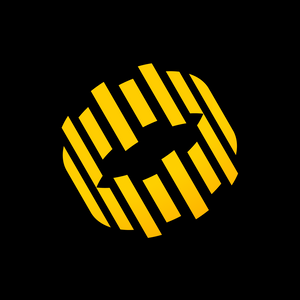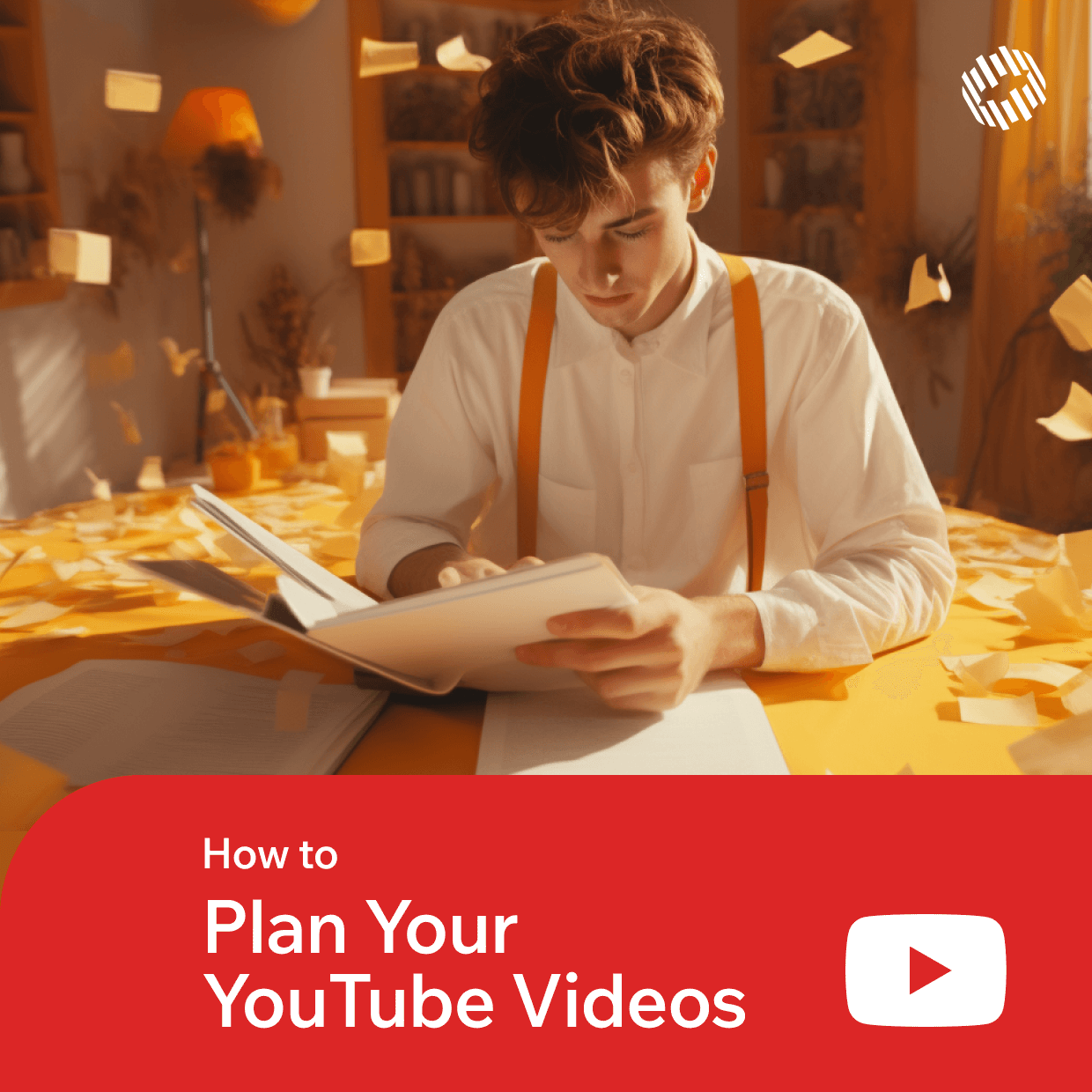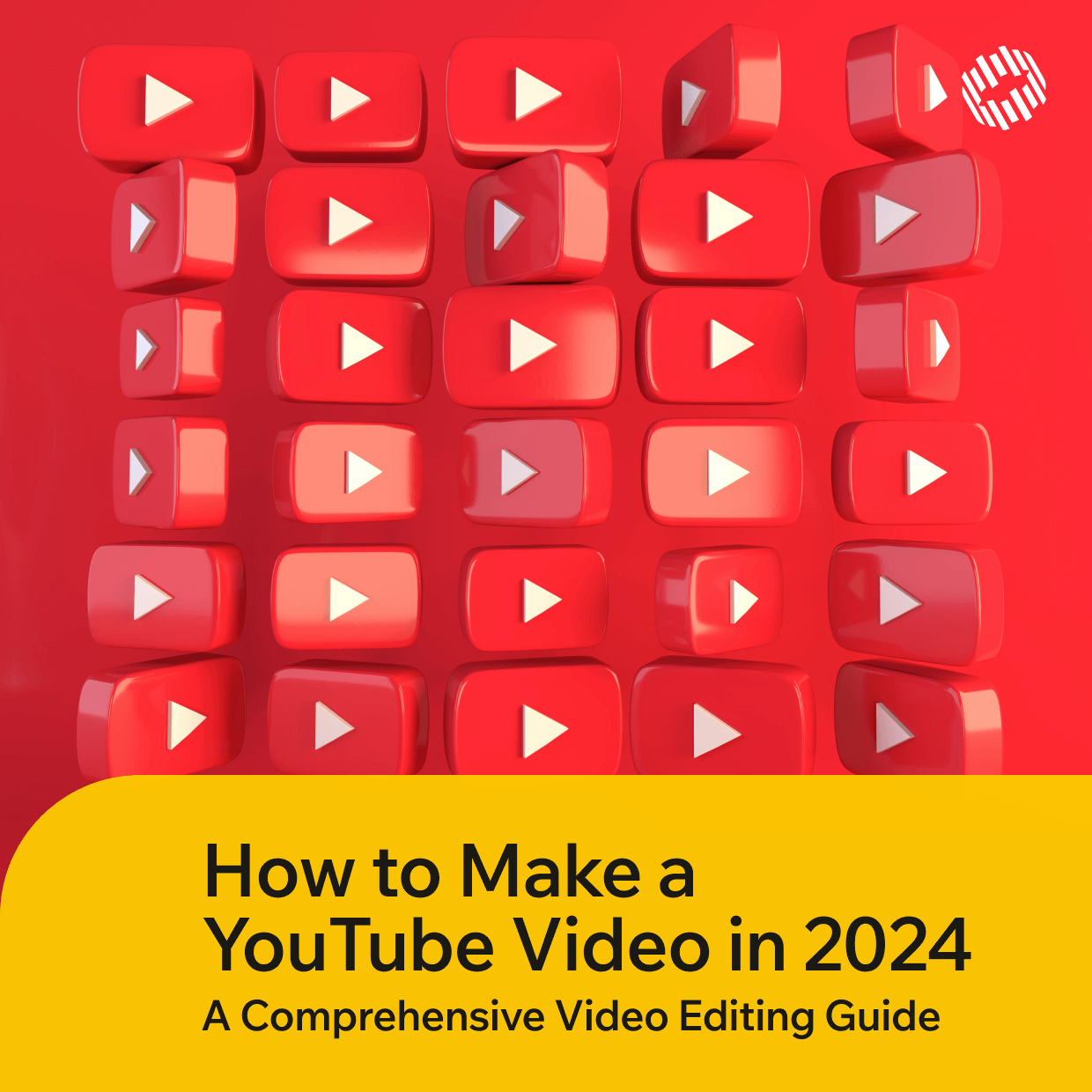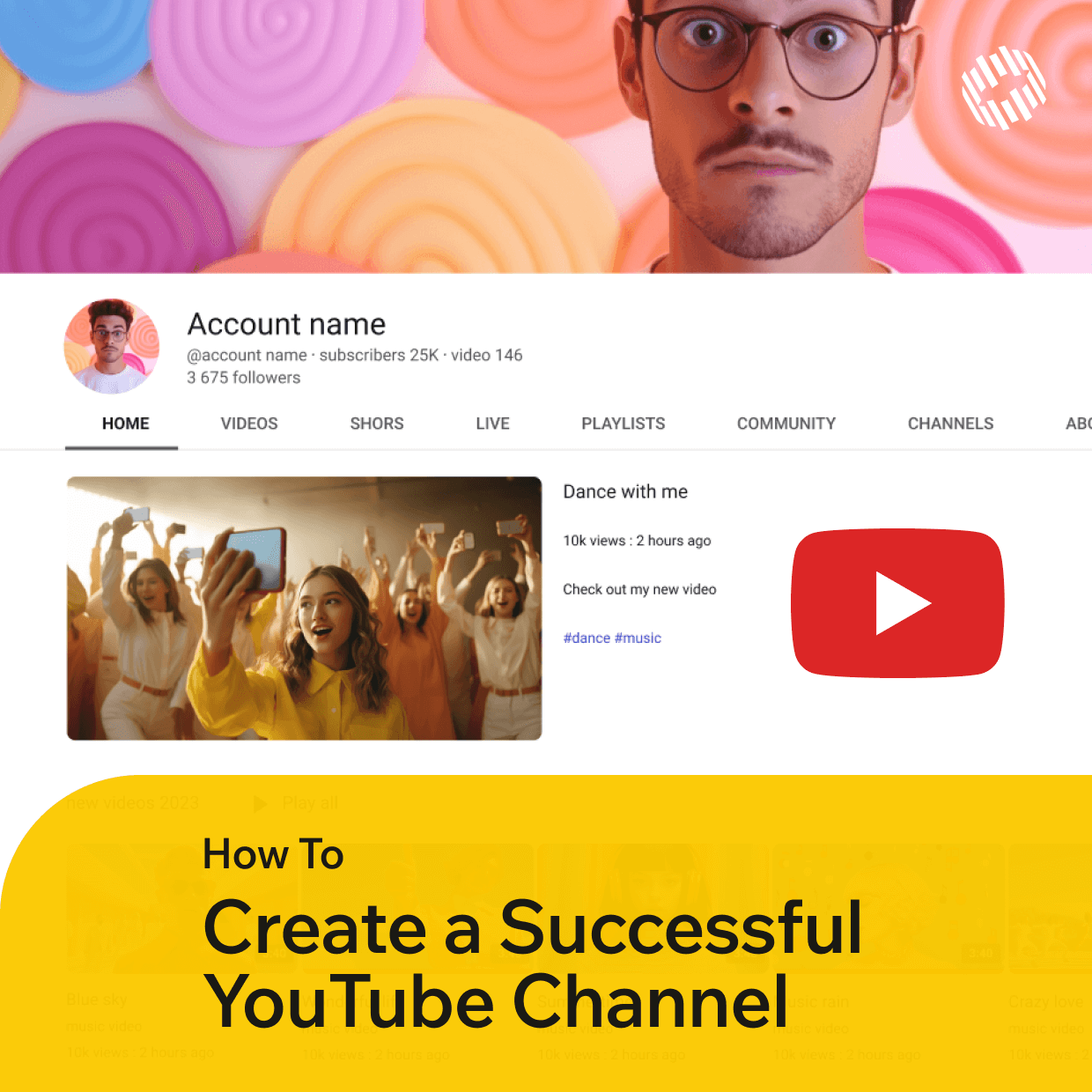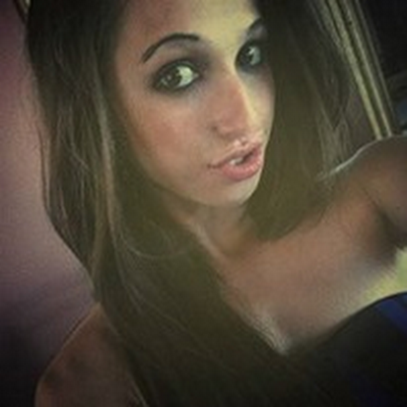Planning your YouTube videos is arguably the most important part of your content creation process. By properly planning your videos, you can ensure that you are providing attention-getting and informative content for your audience. This will encourage them to subscribe to your channel, sign up for your email newsletter, and continue to come back and watch your videos.

In this article we’ll discuss:
- How to choose a topic for your YouTube video
- The importance of outlining your video
- Deciding whether to write a script or just follow your outline
- Creating a hook that holds your audience’s attention
- Keeping your audience watching your video from start to finish
- Including the right kind of call to action to keep your audience coming back for more content from you
How to Plan Out YouTube Videos
Planning your YouTube videos is simple when you have an overall YouTube marketing strategy and content calendar in place.

By knowing what topics you want to cover on your channel and why you can easily divide those topics into separate videos. Then, you can plan each video according to the topic that you plan to cover.
But if you plan to monetize your YouTube channel or if you are using it as a way to increase your reach and drive traffic to your website, you should plan your content in advance.
Having an overall picture of your vision for your channel is the first step to planning your content. You should know things like:
- Your goals for your YouTube channel
- Your ideal audience for your YouTube videos
- What you want to share with your audience
- What action you want your audience to take after watching your videos
- How you are planning on growing your audience
Once you have an idea of what you want to talk about and when, you can choose one narrow topic for each YouTube video.
Why Your YouTube Video Needs an Outline
Once you know what you plan to cover in your video, you can start to create an outline. An outline will help you stay on track and make sure that you are going to cover everything you need to in the optimal amount of time.

The length of your videos depends on your preference and your audience’s interest, but overall you do not want to create videos that are too long. This is because your audience will likely lose interest and drop off.
By creating an outline, you will have a plan to follow from start to finish to make sure that you are creating valuable and interesting content for your audience.
You should plan things like:
- Your hook to grab your audience’s attention
- An introduction to introduce your topic
- 3-5 talking points that you can expand on
- A call to action that tells your audience what they should do next to learn more from you
Should You Follow a Script?
The next thing you should consider is how you will record your video to cover all of the points in the outline. You can write out a script or you can just follow your outline.

Whether or not you decide to read off a script for your video is totally up to you, but by having a script at least planned out, you’ll know that you are hitting all of your talking points and staying on track.
After you have a few videos complete, you can decide whether you want to continue following a script or just improvise.
Overall, it never hurts to be prepared so you can always write out a script and choose not to follow it.
Crafting an Engaging Hook
Did you know that one of the ways that YouTube measures the success of your video is by examining how many people watch it for longer than 15 seconds?

While that may seem like a lot of pressure, all you need to do is create an enticing hook that grabs their attention and makes them want to keep watching.
So, how can you keep your audience watching?
You can do this by calling out a problem that your audience has, teasing a valuable lesson or tip that you’ll share later in the video, or telling an engaging story.
Crafting the right hook for your audience requires that you are very clear on who your ideal audience is, what they are struggling with, and what their goals are.
When you can play off their pain points and dangle a solution that will help them reach their goal, you’ll capture their attention.
Keeping Your Audience Interested
Beyond getting your viewers to watch longer than 15 seconds, you’ll also want to plan your video so that it holds their attention for the entire length of your content. This is helpful because it not only keeps your audience watching, but it also signals to YouTube that people love your content and therefore, the platform should push your videos to more people.

When you plan your YouTube content, you’ll want to plan for both your audience and the YouTube algorithm. Fortunately, the algorithm works off your audience’s behavior, so it should be relatively easy to create YouTube videos that satisfy your audience and the platform.
This can mean getting creative with your editing and using things like pattern interrupts which are techniques to change a thought, behavior, or situation. This can mean changing the camera angle, adding in a graphic, or anything else that breaks up the video visually.
Think about your favorite YouTube videos, how does the creator hold your attention?
- Do they move around a lot?
- Do they switch camera angles?
- Do they use engaging graphics or other images to break up the video?
- Are they really good at storytelling?
Take a few minutes to analyze your favorite creators and their techniques. You should be able to find techniques that you can try out in your videos.
Use Royalty-free Music
As you probably already know, you have to be careful when you choose music or audio for your videos. You have to make sure that the music you include is royalty-free so that you are not infringing on someone else’s copyright. You can find royalty-free music on Tunetank.

Music and other audio help keep your audience interested.
Include a Call to Action
Now that someone has watched your video, what do you want them to do next?

Note: it’s important not to overwhelm your viewers with multiple calls to action. While you can include a few different links and options in your description, leave them with just one CTA at the end of the videos.
It’s been shown that when someone is given too many choices, they don’t make any. So, just choose one thing you really want them to do, and don’t forget to mention it.
Your call to action’s success rate is also likely to be higher if you choose to ask them to subscribe to your channel or join your email list. Offering them something free that will keep them coming back to your content is an important nurture strategy.
Planning Your YouTube Content
Overall, planning your YouTube videos should get easier with practice. It helps to have your goals in mind, royalty-free music on hand, and an idea of what your audience likes and dislikes.


